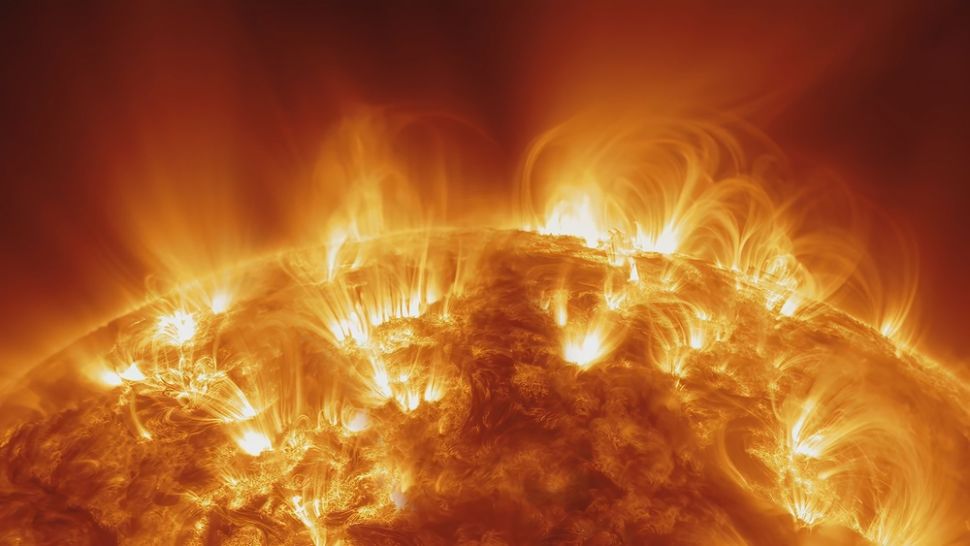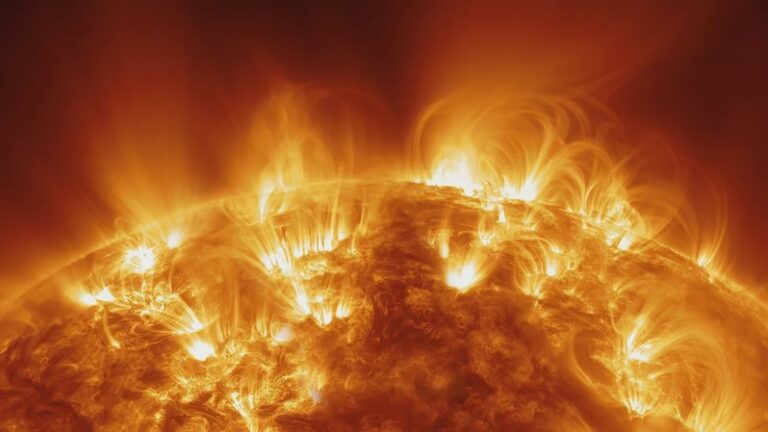The mystery behind the Sun’s enigmatic ‘heartbeat’ signals has finally been unraveled.
After studying an unusual solar eruption from 2017, researchers think they’ve pinpointed the likely origin of mysterious heartbeat-like signals emitted by the sun during solar flares.
A recent study has identified the likely source of the mysterious heartbeat-like signals emitted by the sun during solar flares. Solar radio bursts, which consist mainly of radio waves, microwaves, ultraviolet radiation, and X-rays, are launched into space with coronal mass ejections (CMEs) during solar flares.

These bursts, as well as some radio bursts from distant stars, sometimes exhibit quasi-periodic pulsations (QPPs), which are repeating patterns that create troughs and peaks when viewed on a graph, similar to an electrocardiogram (ECG or EKG) that records the electrical signals of the heart. The study’s findings have important implications for understanding the mechanisms that drive potentially harmful solar storms.
“These beating patterns are important for understanding how energy is released and is dissipated in the Sun’s atmosphere during these incredibly powerful explosions,” Sijie Yu , a solar radio astronomer at the New Jersey Institute of Technology (NJIT) and co-author of the study, said in a statement . “However, the origin of these repetitive patterns has long been a mystery and a source of debate among solar physicists.”
In a study published on December 12, 2022, in the journal Nature Communications, Yu and his colleagues investigated a heartbeat signal that was present in a medium C-class solar flare that occurred on July 13, 2017. The team analyzed data from the Expanded Owens Valley Solar Array (EOVSA) at NJIT in California and NASA’s Solar Dynamics Observatory, and they found a secondary heartbeat signal that was unexpected and appeared to be related to the original signal. This discovery allowed the researchers to identify the cause of the dual signals that occur during solar flares, according to Yu. Solar flares are classified as A, B, C, M, or X, with each class being at least 10 times more powerful than the previous one.
Tracing back the signals
Solar flares occur due to the reconfiguration of the sun’s magnetic field lines, which become twisted and then snap back, releasing a tremendous amount of energy that ejects plasma and radiation into space. These ejections form superheated loops of ionized gas that generate a current running down the center of the loop in a thin sheet. This current sheet is thought to be the origin of the “beats” seen in QPP signals. However, the cause of disruptions to the current sheets has remained unknown until now.
During the 2017 solar flare, the main heartbeat signal beating every 10 to 20 seconds was identified as originating from the current sheet’s base, like most other QPP signals found in other solar flares. However, the secondary signal, which was weaker than the main signal and beat every 30 to 60 seconds, emerged across the entire current sheet, which was previously unobserved. The team used data obtained from EOVSA to determine that the two heartbeats were likely triggered by magnetic islands, bubble-like structures that form in the current sheet, despite their different periodicities. The researchers now plan to reassess data from other QPP signals to determine if they also arose from magnetic islands.
Do not forget to share your opinion with us to provide you with the best posts !




0 Comments